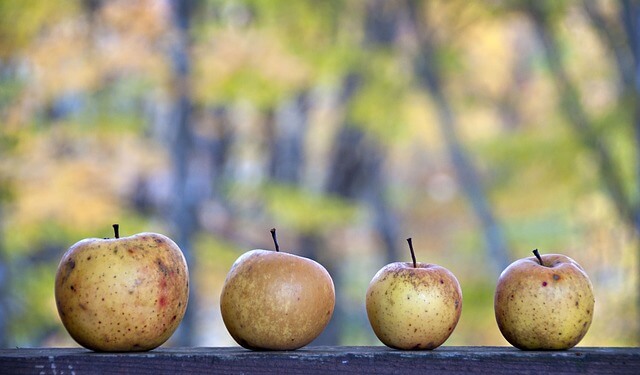
Can You Forage for and Use Wild Apples?
Have you ever seen an abandoned apple tree with fruit and wondered if they are edible? The short answer is yes, they should be safe to eat. I’ve been using wild apples as a food source since I was a kid and can share some helpful tips for foraging for and using these fruits.
What Are Wild Apples?
Wild apples are produced by trees that grew from seed rather than a named cultivar that was grafted onto rootstock. Any apple tree purchased from a nursery is a clone of a tree that produces desirable fruit.
Wild apple trees might produce fruit that is delicious for fresh eating, good for pies, or barely edible at all. There is so much variation in apple trees grown from seed that most people plant cloned trees.
Many of the ‘wild’ apple trees you may encounter are actually named varieties that are no longer cared for.

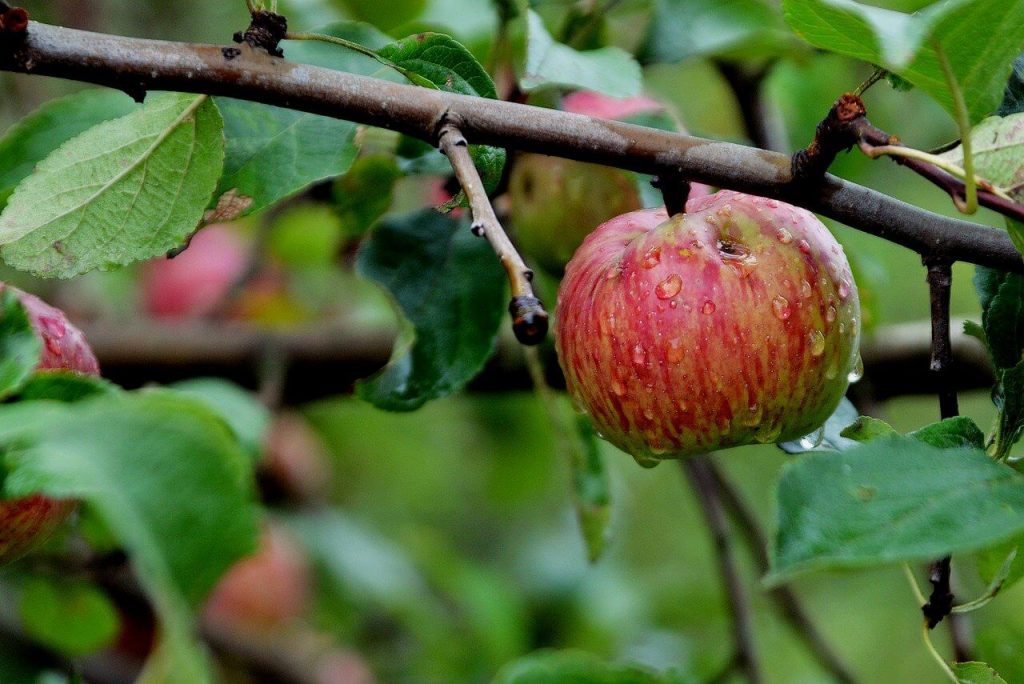
How to Forage for and Pick Abandoned Apples
If you have a large property, you may have fruit trees that were abandoned or grew from seeds. They are common around old farmsteads, along roads, and fencelines. If you have neighbors who don’t use the apples from their trees, ask if you may gather them. Many people will be happy to have you clean up the dropped fruit.

If you find trees with useable fruit, here are some tips for harvesting:
- Make sure you have permission to pick
- Check for safety hazards around the tree (wasps are common!)
- Bring bags, phone, and an EpiPen if you are allergic to stings
- Bring a fruit picker to harvest fruit from higher branches
- Be prepared for a lot of insect damage to the fruit
- Make sure you don’t bring wasps home in your bag of fruit!
As an Amazon Associate, I earn from qualifying purchases.
How to Use Wild Apples
Many people see the bad spots and insect damage in untreated apples and want nothing to do with eating them. I understand why people feel this way. We are so used to eating the perfect fruits from the grocer that we don’t know what to do with a wormy apple.
Here are some tips for using these less-than-perfect apples:
- Wash thoroughly and cut into quarters
- Core the apple and cut out any worms or damage
- Peel the skin if you like
- Use these fruits to make wild applesauce or dice for recipes
- If the fruit is fairly blemish-free, slice and eat as a snack
- Freeze, dehydrate, or can extra fruit
- Learn How to Can Applesauce
If your wild apples are too wormy to use, try feeding them to your chickens or other livestock. Most farm animals love those wormy apples. Be careful not to feed too many apples to any livestock to prevent gastric problems that can be deadly.
Using Wild Apples in Cooking and Baking
Once you’ve removed the bad parts from your apples, the rest can be cut up and used in pies, applesauce, jam, jelly, bread, muffins, juice, or cakes. My favorite way to use wild apples is cooked down into applesauce that is canned in a water bath canner or frozen to eat over the winter.
When I process a large batch of apples, I like to core the apples, cook them down, then run them through a hand crank strainer to remove the peels.
I’ve also attempted to peel these fruits using an apple peeler with little success. The hand crank apple peelers do best with fruit that is a uniform size.
As an Amazon Associate, I earn from qualifying purchases.
Learning to Love Imperfect Apples
Not everyone will want to go through the extra work to use apples that haven’t been sprayed or raised with organic pest management. If you can’t stand the idea of eating fruit that had bugs in it, you aren’t alone.
For me, this isn’t such a big deal. As a kid, my family harvested wild apples for cider, pies, and sauce every year. I grew up helping cut out the wormy spots to save the fruit that was still good.

If you are having trouble making ends meet, are concerned about the cost of food, or just want to avoid pesticides or make do with what you have on hand, then using wild or imperfect apples makes sense.
You might even be able to help out a neighbor who has apples and other fruit trees but doesn’t use the fruit. Check on Freecycle or Craigslist too…I’ve scored some pretty nice apples that way. I usually take a dozen eggs from my hens to share with the owner of the apple tree.
Have you ever used wild apples? What is your favorite way to use them?
As an Amazon Associate, I earn from qualifying purchases.
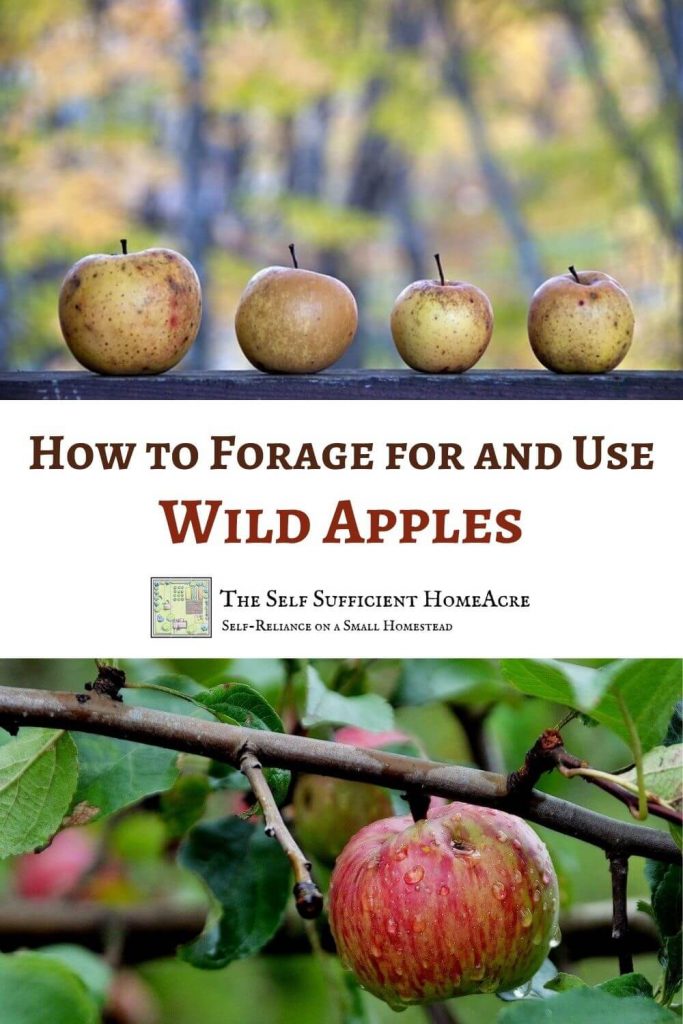

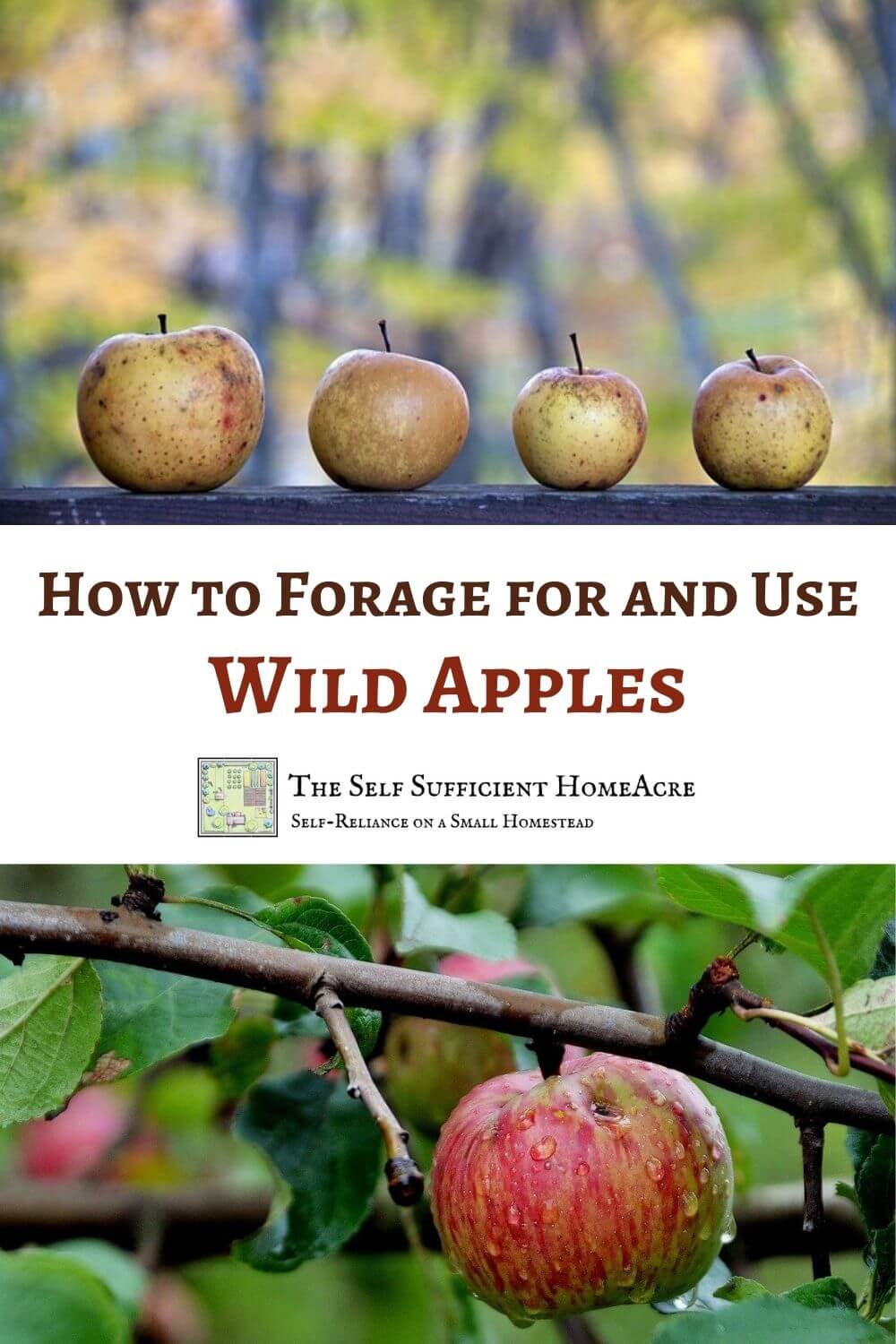
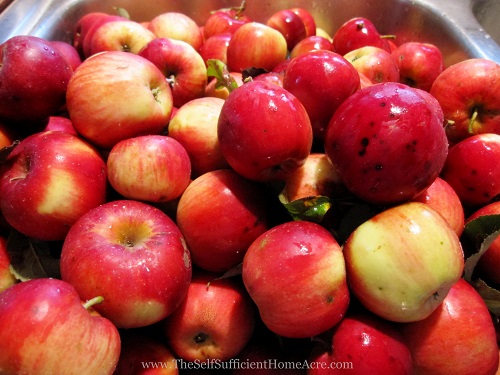

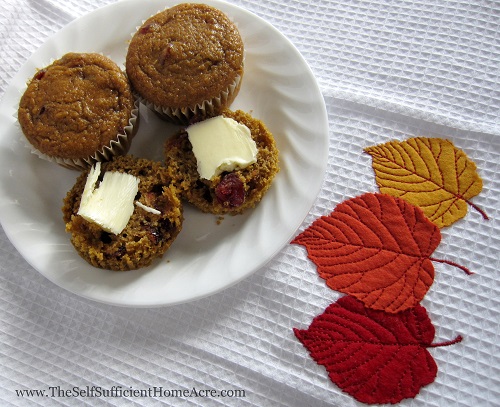

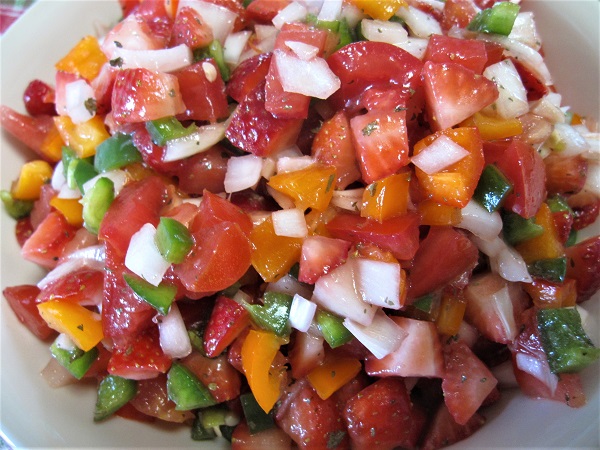
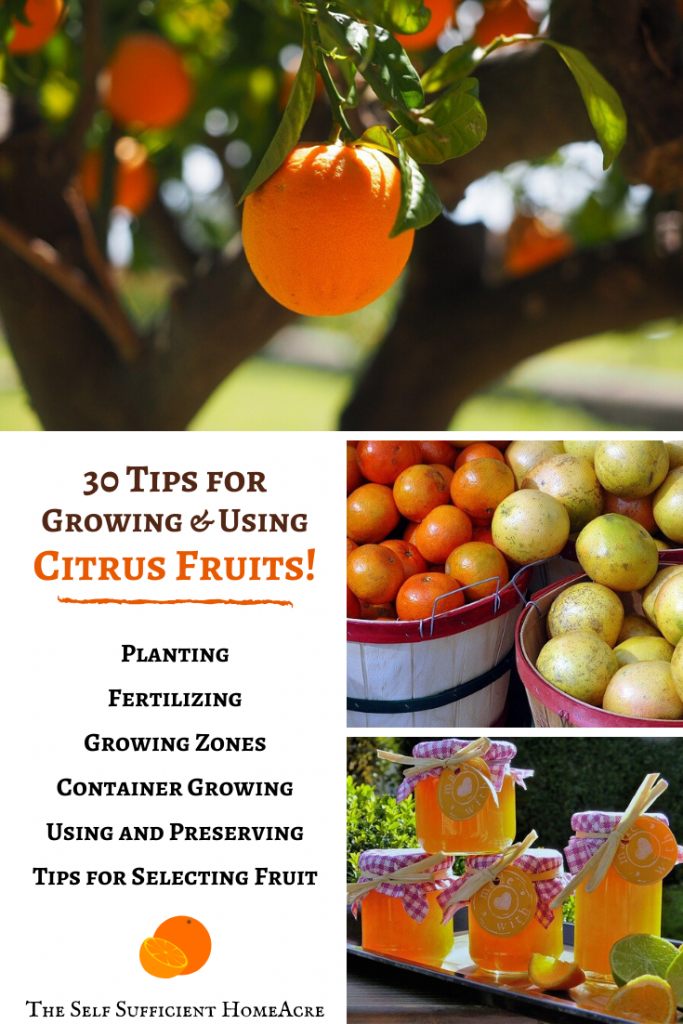

Hi Lynn,
I have 3 apple trees on my property. I’ve stopped spraying the grass near them for 3 years (fertilizes and pesticides) but this year I finally restarted the spraying because no apples had appeared for years. Now, I have a full harvest!! Should I eat them or no. The grass is by the roots of trees and everything is sprayed to keep my grass healthy.
Also, when do you cut back apple trees December January?
Thanks for your input!
Mary
Hi Mary,
I would wash the apples very well and try to stop spraying for the future harvests. You really don’t need the sprays to keep grass healthy. Apple trees should be pruned in late winter before the weather warms up. In my area, that is in late Feb or early March. I hope this helps!
Thank you so much for the great article. I was shocked by some stupid articles, that
wild apples are poisonous. I started this new hobby 6 years ago – started picking organic fruit – juneberries, blueberries, crabapples, wild pears and have been eating them, neither
got poisoned or died. I pick them from the local city parks, they are clean, organic and
keep me healthy. Last year during the pandemic, when most people locked themselves,
I picked my fruit, enjoyed the sun and never worried about Covid.
Hi Jasmina… I think some people misidentify plants and fruits and that has led them to believe that wild apples are poisonous. Thanks for stopping by!
Hi
I’m wondering if you could offer some advice.
I have found several apple tree’s, just bursting with the most beautiful apples! However, these apple tree’s are next to several, heavily trafficked roads.
Am i able to pick these and cook them or will they contain high levels of harmful emissions?
Thank you
Rachel
Hi Rachael,
If the road has been in use for many years, dating back to the days before unleaded gasoline, it might be better to pass on the apples. If the road wasn’t highly traveled then, or if it was built since then, the chemicals may not be as bad. I’m sorry I can’t give a definitive answer without doing a soil test.
This is the second time this week that I have read something about wild apples! So interesting. Our one apple tree was here when we bought our place…it wasn’t wild, just neglected. The apples are not beautiful, but they are delicious!
That’s great, Jenn! I don’t have access to as many ‘wild’ apples as I used to have… but we usually get at least some from friends and neighbors. 🙂
Thanks for featuring my donuts! Thank you for hosting! This is what I featured the week of 9-21 to 9-25-2020 on my blog. On Tuesday was Ultimate 6 Ingredient Garlic Pork Loin. Wednesday was Creamy Key Lime Cheesecake. Thursday was Beef Chuck Roast with Vegetables and Herbs. And winding up this week Tip Friday Chopping an Onion Without Tears. Enjoy!
Thank you for hosting this inspiring party and for the features.
Have a lovely, safe and happy week.
Fabby
How interesting! I never knew there even was such a thing as wild apples. Thanks for the party.
Hi Amy,
It’s funny…wild apples were a big deal for my family all through my childhood. 🙂 Thanks for sharing with us!
Thank you for hosting this lovely party.
Naush
Thanks for joining us, Naush!
Thanks for hosting and featuring my Pizza Dough Apple Hand Pies, much appreciated…
Thanks so much for sharing your recipe with us!
Thanks so much for taking the time to host each week!!
It is greatly appreciated!!
Stay safe, healthy and happy!
Hugs,
Deb
Thank you, Deb! I hope you are doing well too!
I know I’m late to the party and unlikely to get a reply, but I have a question. I’m sprouting bunches of apple seeds, mostly trying to set up a free food forest thing at a friends house for as little input as possible. My boyfriends father keeps admonishing me that I’ll get poisoned ‘hedge apples’ I’m pretty sure they are not a true apple and that apple seeds would not give poisonous fruit (not pretty or tasty maybe, but not poisonous. Any thoughts?
Hi Victoria,
You are correct. The apples won’t be poisonous. Some of the resulting trees may never bear fruit, some may have fruit that is so small and tart you don’t want to eat them, and others could produce wonderful fruit. My grandparents farm had many apple trees that grew from seed and they had several trees that produced fruits that were treasured for pies and sauce. We used to collect feed bags full in the fall to make cider…I’ve never tasted such good cider since.
Best wishes with your food forest!
The fruit from each wild apple tree has it’s own taste – I love sampling the different flavours. Apple crumble is a favourite at our house; and with the very tart small ones, an ‘apple paste’ tastes amazing… substituting apples for quince in quince paste recipes… yum
That sounds delicious 🙂 I don’t think many people realize the genetic diversity in apples. Thanks for sharing!
We’ve had a bumper harvest of apples in Michigan this year. We have found several wild trees and have made quart upon quart of apple sauce! We’ve also dried some, those are eaten too quickly though! I’ve canned several quarts of apple pie filling with them as well. It amazes me that other people aren’t out there picking this free food!
Hi Teresa,
That’s so awesome! I think people are so busy with life that they don’t have time, or don’t want to make the time, to use up free food like this. Plus, our society has been conditioned to think that if the apple doesn’t look picture perfect, it must be yucky. I grew up using wild apples, so I can see past all that. I’m so glad you have been able to make good use of those wild apples too!
Thanks for stopping by and sharing with us!
Enjoyed the article. Thanks.
Happy to share! Thanks for stopping by!
My dad gets tons of apples from his trees…he makes yummy pies!
Thanks for sharing! 🙂
Susan
Hi Susan,
Hope he gets his fill of apple pie this year! Thanks for visiting!